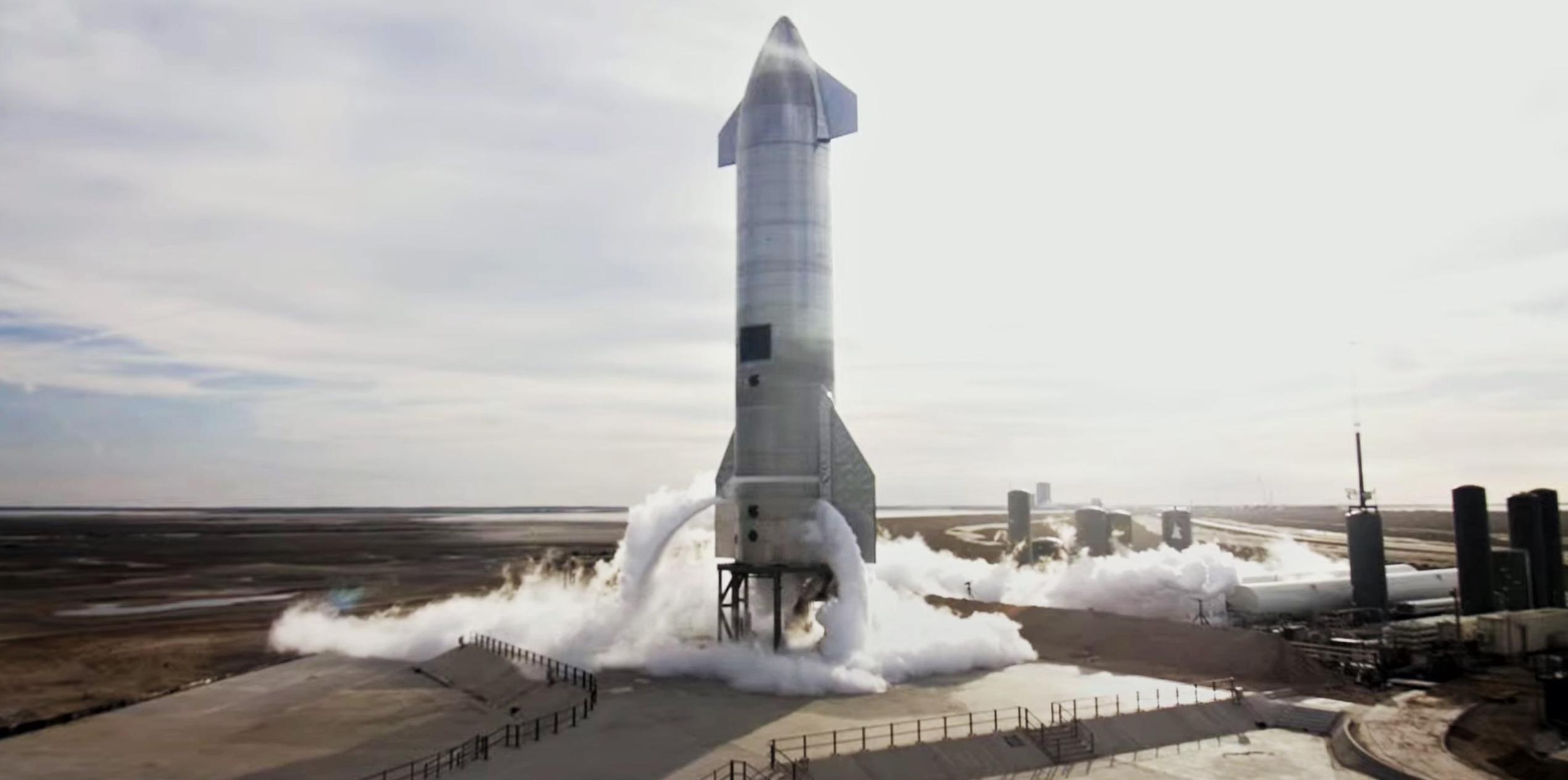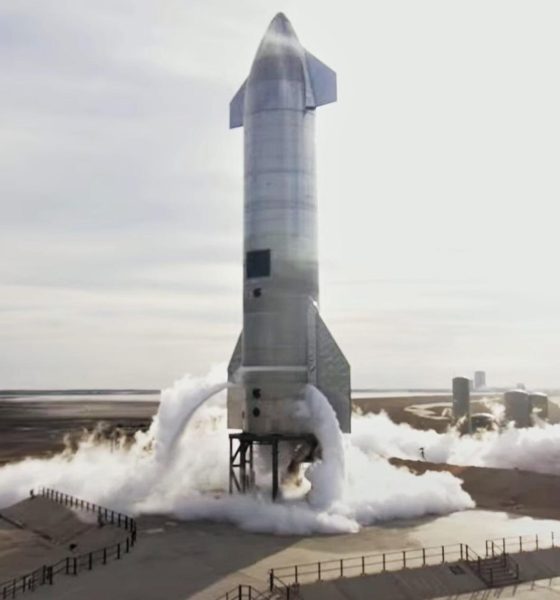

News
SpaceX Starship launch delayed to Tuesday by poor FAA planning
Update: CEO Elon Musk says that SpaceX’s fourth high-altitude Starship launch has been delayed from Monday to Tuesday after an FAA inspector – recently required to be onsite for launches – was inexplicably more than six hours late.
While the smallest grain of salt is warranted given Musk’s recently vitriolic relationship with the FAA, the CEO has every reason not to lie about a federal regulatory agency that SpaceX almost fundamentally depends on. As such, the implication is that a lone FAA inspector – only recently required by the FAA itself to be onsite for SpaceX Starship launches – was somehow more than four or five hours away from Boca Chica, Texas by 11am CDT, March 29th.
The only possible explanation for such a delay is that a single inspector – lacking virtually any of the resources afforded to large government agency – missed a flight on a public airline, had a flight canceled at the last second, or was somehow stranded in the middle of nowhere by car issues. As any sane human familiar with air or car travel would know, those issues happen and should always be anticipated. Knowing full well that it had just changed SpaceX’s Starship launch license just two weeks prior to prevent flights without an inspector present, the FAA does not appear to have prepared for those issues in even the most basic sense, failing to ensure alternate methods of transport or two redundant inspectors.
In essence, due either to severe underfunding, general ineptitude, some childish attempt to assert dominance, or some combination of all three, the FAA has explicitly disrespected the hundreds of (possibly 1000+) SpaceX employees working around the clock for weeks to launch Starship SN11 as quickly as possible. Given that the FAA itself distributed Temporary Flight Restrictions (TFRs) for SN11’s Monday launch on Saturday and noted plans for the launch more than a day prior, the giant regulatory agency had no less than 24-48 hours of prior warning even if they’d somehow ignored or missed SpaceX’s own CEO announcing a delay to March 29th on March 26th.
If a regulatory agency like the FAA is incapable of ensuring that an inspector can stand around at a launch the agency itself required an inspector be present for days prior, the same apparatus assuredly should not and cannot be trusted to regulate systems as complex as modern aircraft, spacecraft, and rockets. If the FAA is, in fact, up to the challenge of responsibly regulating those systems with the public’s best interest in mind, then failing a task as simple as ensuring its own inspector is transported, on time, from Point A to Point B is a conscious decision or mistake. Either way, something clearly needs to change.
CEO Elon Musk says that SpaceX has delayed Starship serial number 11’s (SN11) high-altitude launch debut from Friday to Monday to best ensure that the company can “land & fully recover” the 50-meter-tall steel rocket.
First and foremost, the weekend will allow SpaceX times time for “additional checkouts” and scour Starship SN11 and the data it’s produced during testing for any red flags or minor issues. While plans for a same-day static fire and launch didn’t pan out on Friday, March 26th, SpaceX did manage the first half, firing up just one of Starship’s three Raptors to verify the health of the replacement engine after a Thursday Raptor swap. The test marked the first time SpaceX has intentionally fired up just one of the Raptors installed on a three-engine Starship prototype, so the delay will provide extra time to ensure that all three are still looking good.
Standing down SN11 until probably Monday. Additional checkouts are needed. Doing our best to land & fully recover.— Elon Musk (@elonmusk) March 26, 2021
The weather in Boca Chica, Texas has also taken a turn for the worse in the last few days, so the extra few days will also (hopefully) allow time for wind, visibility, and precipitation conditions to improve. According to Musk, Starship SN11 is now scheduled to fly as early as Monday “afternoon” and, as usual, SpaceX will offer live coverage of the fourth high-altitude launch and landing attempt beginning a few minutes before liftoff.
With a little luck, the Starship prototype will be able to continue a trend of iterative improvement and one-up Starship SN10 with a slightly softer landing and no explosion minutes after touchdown. Stay tuned for updates both here and on SpaceX’s social media platforms to catch the official webcast.

Elon Musk
Elon Musk’s X will start using a Tesla-like software update strategy
The initiative seems designed to accelerate updates to the social media platform, while maintaining maximum transparency.

Elon Musk’s social media platform X will adopt a Tesla-esque approach to software updates for its algorithm.
The initiative seems designed to accelerate updates to the social media platform, while maintaining maximum transparency.
X’s updates to its updates
As per Musk in a post on X, the social media company will be making a new algorithm to determine what organic and advertising posts are recommended to users. These updates would then be repeated every four weeks.
“We will make the new 𝕏 algorithm, including all code used to determine what organic and advertising posts are recommended to users, open source in 7 days. This will be repeated every 4 weeks, with comprehensive developer notes, to help you understand what changed,” Musk wrote in his post.
The initiative somewhat mirrors Tesla’s over-the-air update model, where vehicle software is regularly refined and pushed to users with detailed release notes. This should allow users to better understand the details of X’s every update and foster a healthy feedback loop for the social media platform.
xAI and X
X, formerly Twitter, has been acquired by Elon Musk’s artificial intelligence startup, xAI last year. Since then, xAI has seen a rapid rise in valuation. Following the company’s the company’s upsized $20 billion Series E funding round, estimates now suggest that xAI is worth tens about $230 to $235 billion. That’s several times larger than Tesla when Elon Musk received his controversial 2018 CEO Performance Award.
As per xAI, the Series E funding round attracted a diverse group of investors, including Valor Equity Partners, Stepstone Group, Fidelity Management & Research Company, Qatar Investment Authority, MGX, and Baron Capital Group, among others. Strategic partners NVIDIA and Cisco Investments also continued support for building the world’s largest GPU clusters.
News
Tesla FSD Supervised wins MotorTrend’s Best Driver Assistance Award
The decision marks a notable reversal for the publication from prior years, with judges citing major real-world improvements that pushed Tesla’s latest FSD software ahead of every competing ADAS system.

Tesla’s Full Self-Driving (Supervised) system has been named the best driver-assistance technology on the market, earning top honors at the 2026 MotorTrend Best Tech Awards.
The decision marks a notable reversal for the publication from prior years, with judges citing major real-world improvements that pushed Tesla’s latest FSD software ahead of every competing ADAS system. And it wasn’t even close.
MotorTrend reverses course
MotorTrend awarded Tesla FSD (Supervised) its 2026 Best Tech Driver Assistance title after extensive testing of the latest v14 software. The publication acknowledged that it had previously criticized earlier versions of FSD for erratic behavior and near-miss incidents, ultimately favoring rivals such as GM’s Super Cruise in earlier evaluations.
According to MotorTrend, the newest iteration of FSD resolved many of those shortcomings. Testers said v14 showed far smoother behavior in complex urban scenarios, including unprotected left turns, traffic circles, emergency vehicles, and dense city streets. While the system still requires constant driver supervision, judges concluded that no other advanced driver-assistance system currently matches its breadth of capability.
Unlike rival systems that rely on combinations of cameras, radar, lidar, and mapped highways, Tesla’s FSD operates using a camera-only approach and is capable of driving on city streets, rural roads, and freeways. MotorTrend stated that pure utility, the ability to handle nearly all road types, ultimately separated FSD from competitors like Ford BlueCruise, GM Super Cruise, and BMW’s Highway Assistant.
High cost and high capability
MotorTrend also addressed FSD’s pricing, which remains significantly higher than rival systems. Tesla currently charges $8,000 for a one-time purchase or $99 per month for a subscription, compared with far lower upfront and subscription costs from other automakers. The publication noted that the premium is justified given FSD’s unmatched scope and continuous software evolution.
Safety remained a central focus of the evaluation. While testers reported collision-free operation over thousands of miles, they noted ongoing concerns around FSD’s configurable driving modes, including options that allow aggressive driving and speeds beyond posted limits. MotorTrend emphasized that, like all Level 2 systems, FSD still depends on a fully attentive human driver at all times.
Despite those caveats, the publication concluded that Tesla’s rapid software progress fundamentally reshaped the competitive landscape. For drivers seeking the most capable hands-on driver-assistance system available today, MotorTrend concluded Tesla FSD (Supervised) now stands alone at the top.
News
Elon Musk’s Grokipedia surges to 5.6M articles, almost 79% of English Wikipedia
The explosive growth marks a major milestone for the AI-powered online encyclopedia, which was launched by Elon Musk’s xAI just months ago.

Elon Musk’s Grokipedia has grown to an impressive 5,615,201 articles as of today, closing in on 79% of the English Wikipedia’s current total of 7,119,376 articles.
The explosive growth marks a major milestone for the AI-powered online encyclopedia, which was launched by Elon Musk’s xAI just months ago. Needless to say, it would only be a matter of time before Grokipedia exceeds English Wikipedia in sheer volume.
Grokipedia’s rapid growth
xAI’s vision for Grokipedia emphasizes neutrality, while Grok’s reasoning capabilities allow for fast drafting and fact-checking. When Elon Musk announced the initiative in late September 2025, he noted that Grokipedia would be an improvement to Wikipedia because it would be designed to avoid bias.
At the time, Musk noted that Grokipedia “is a necessary step towards the xAI goal of understanding the Universe.”
Grokipedia was launched in late October, and while xAI was careful to list it only as Version 0.1 at the time, the online encyclopedia immediately earned praise. Wikipedia co-founder Larry Sanger highlighted the project’s innovative approach, noting how it leverages AI to fill knowledge gaps and enable rapid updates. Netizens also observed how Grokipedia tends to present articles in a more objective manner compared to Wikipedia, which is edited by humans.
Elon Musk’s ambitious plans
With 5,615,201 total articles, Grokipedia has now grown to almost 79% of English Wikipedia’s article base. This is incredibly quick, though Grokipedia remains text-only for now. xAI, for its part, has now updated the online encyclopedia’s iteration to v0.2.
Elon Musk has shared bold ideas for Grokipedia, including sending a record of the entire knowledge base to space as part of xAI’s mission to preserve and expand human understanding. At some point, Musk stated that Grokipedia will be renamed to Encyclopedia Galactica, and it will be sent to the cosmos.
“When Grokipedia is good enough (long way to go), we will change the name to Encyclopedia Galactica. It will be an open source distillation of all knowledge, including audio, images and video. Join xAI to help build the sci-fi version of the Library of Alexandria!” Musk wrote, adding in a later post that “Copies will be etched in stone and sent to the Moon, Mars and beyond. This time, it will not be lost.”








